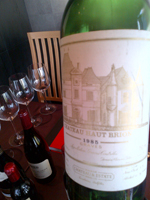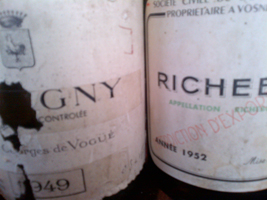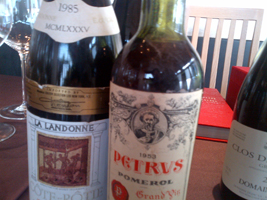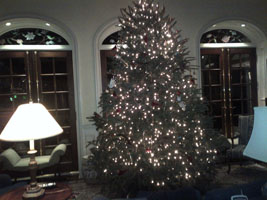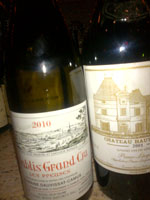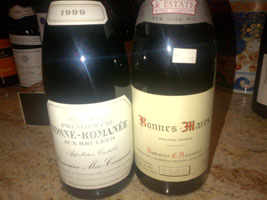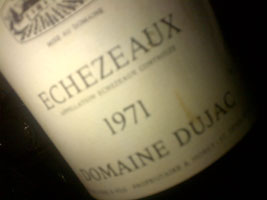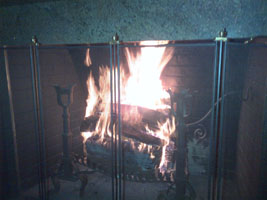Same to you, pal. Actually, the Jiu Gui Hui (pronounced Joe Gway Hwee, I’m told) means the Wine Ghost Society, a secret Shanghai Wine Society where gentlemen by the names of Ignition, Big Bee, China Live, Scratch and Boomtime convene on a regular basis. This night’s dinner was at Roosevelt Prime Steakhouse, the finest of its kind in this ever-expanding city, and I was in great spirits by the end of the evening thanks to these spirited ‘ghosts.’
Jiu Gui Hui


Views from Shanghai
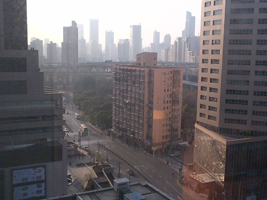
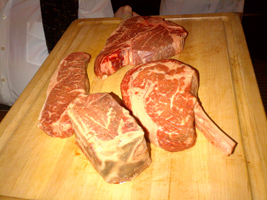
Prime’ Time
The bar was set quite highly right away with a 1949 Cheval Blanc. While it was a Calvet Negociant bottling, I don’t recall a Chateau-bottling that was ever considerably better. It needed a minute to blow off some old, pent-up steam, but there was deep fruit inside with some wheat thin borders. Dark and rich, this was a classic Cheval with a sturdy, thick finish that came across youthfully (96).
A 1961 Leoville Las Cases buddied up with the Cheval, and began a procession of Leovilles as well. Its nose was divine, sweet and sexy, full of chocolate and caramel with nice spice. There were ‘no rough edges,’ and the silkiness of Las Cases really shined. This was a delicious, long, smooth and satiny wine, one with a classic profile and an elegant and dusty finish that was still zippy. While stylistically opposite in many ways to the Cheval, it was just as good, perhaps even more natural in its drinkability and enjoyment factors (96).
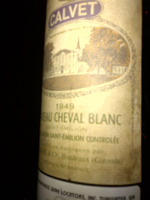
1949 Cheval Blanc
The 1982 Leoville Las Cases, an ‘Ashley Judd of a wine,’ had a very coy and dusty nose. There were wafer, cassis and deep plum fruit aromas. There was outstanding length and acidity, real ‘backbone,’ yet it was still elegant and refined. It had a spicy finish that also had a touch of awkward flavors (95).
The next wine felt so much younger, even though it was a 1990 Leoville Las Cases. There was deep, inky fruit here; even thought it was 23 years old, it felt underage. This was a rich, saucy, thick and chunky wine full of blue and black fruits. It was quite impressive in the fact that it was so young, and so great. There was almost a Napa richness to this wine. Within the last three or so years, this wine won a major 1990 Blind Horizontal tasting I did in Hong Kong; it is still looking very strong, and like one of my wines of the vintage (96+).
The 2000 Leoville Las Cases was relatively disappointing, given how much I love this vintage. As known by those that read all my articles, I tasted all five First Growths from 2000 a week later, and they all showed considerably better than the Leoville on this night. This was elegant and wheaty, but lean and shut down. It had some zip, but I felt like I couldn’t feel the greatness in the wine on this night. Certainly, it will show better in the future and probably has in the past (93+).
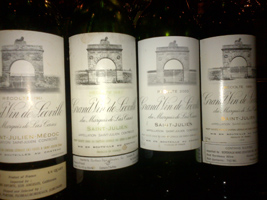
Leoville Lineup
A mouthful of 1990 Beuasejour Duffau was generously offered by another table. I wish I got more. It had a thick, sweet nose full of black and blue fruit, along with cola and mint aromas. The palate was also thick, as well as rich with a long finish. It reminded me a bit of the Cheval we just had, actually more like the 1947. Those are big words, but the 1990 Beausejour Duffau is a big wine. I still can’t understand why nothing else this estate has made has come close the quality of their 1990. I need to sit down with a full bottle of this wine again soon (96).
A 1988 Clinet had a nice Pomerol nose with a touch of sour candy to it. There was fleshy fruit in this tasty wine, which was a bit lighter and more ready than the previous flight, but a pleasant and enjoyable wine (92).
A 1996 Pichon Baron had nice fruit for a ’96, although it was a touch stinky. Unusually cherry, it also had a tangy finish (90).
It was time for the Burgundies, beginning with a ‘flowery’ 2000 Mugnier Musigny. There was sexy fruit here, a red sexy, along with catnip, vitamin, citrus and wet bamboo. The palate had nice flesh and was gamy with ‘good vibrancy’ per China Live. While I found my first encounter with this wine to be excellent, the other Burgs that followed it knocked it down a peg to very good (92).

Burgundy Time
The 2001 Meo-Camuzet Corton Clos Rognet was a special wine. It had a deep, dark nose with lots of power. You could ‘smell the tannin’ in this ‘huge’ wine. Additional aromas of wet wool and slate morphed into lamb meat and resource-laden rock. Powerful, deep and dark all appeared in my notes again. This wine came across younger than most 2001s and had ‘twenty years to go,’ according to one. It was like ‘a glycerin umbrella’ per China Live, and this fantastic red wasn’t slowed down by a touch of burnt rubber on its finish, which was in the pedal to the metal family. This was a wow wine (95).
The 2003 DRC Romanee St. Vivant had that forward, ’03 edge and while ripe, it had more in reserve than many other wines from the same vintage. There were aromas of cola, dust, blueberry, spice and orange tang. Tasty flavors of iron, rose and ‘eucalyptus’ per Jennie blended in well with this rich and ripe wine. This was a hearty har har red that was thick and put on some weight (94+).
A 1949 Climens closed out the evening in fine fashion with its ‘oolong, mint and camphor’ notes. Honey and mahogany never looked so go together. I’d like everyone to meet Honey, and this is Mahogany lol. Well, it was Shanghai, and this spectacular Sauternes sent us off into the cold, January night with warmth in our souls.
In Vino Veritas,
JK





